You already know that I’m obsessed with the idea that somehow the Gods play a much more important role in the series than we initially thought. Please take a look at my original theories about the Gods, some ideas on why I thought Violet and Xaden are Gods, and, of course, the parallels between our characters and the pantheon.
Now that it’s clear the Gods are definitely a lot more involved (and still have a lot of power), it’s time to reframe the original theories and explore more options. My lovely friend Zuzle and I have been discussing a connection between dragons, Gods, and colors. There are still gaps in our theories since we don’t have the full picture, but I feel like we’re getting very, very close.
Plus, we recently came across two theories on Reddit from iiamuntuii and Rabbid_Goat. Combined, they helped consolidate our theories and reinforce Zuzle’s idea that colors are especially important in this series.
This is going to be slightly long, so please bear with me. It’s a bit difficult to explain it all, so let’s ease into it. Think of Rebecca Yarros as the ultimate criminal mastermind, plotting and scheming, while we are the detectives with our evidence boards, trying to uncover the mysteries. However, we’re just like Bodhi, perpetually one step behind…
Numbers, numbers…
At first glance, everything seems to be in sixes.
- We have six Gods: Malek, Dunne, Zinhal, Amari, Loial, Hedeon.
- We have six dragon colors: Black, Blue, Orange, Green, Brown, Red.
- We have six landmasses: Continent, Unnbriel, Zehyllna, Deverelli, Loysam, Hedotis.
- We have six tools of warfare: Sword, Shield, Fire, Water, Claw, Book.
- We had the first six riders.
But there is a problem. We find out there is a seventh species of dragons—the irids. Suddenly, our numbers are off. It feels like there should be seven of everything, with one missing from each category. Where is the seventh God? Where is the seventh isle? Where is the seventh tool of warfare?
According to Rabbid_Goat and their fantastic observation, the “tools of warfare” are not actually tools of warfare at all. They are the emblems of the Gods.
- “The etched symbol of two swords gripped in the center by a claw—the emblem of Dunne.”
- “It’s similar to ours, […]”
Great, we now know that emblems are related to each God.
To make sense of it all, we now need to analyze each God and understand which symbol could correspond to whom.
Rabbid_Goat explains that when someone dies, their possessions are burned for Malek. If you remember, there is even a pit forever burning on top of Basgiath. It’s fair to assume that Malek = Fire at this point.
For Book? Easy. We can assume it’s all about wisdom. The isle of Hedotis is all about being wise. Naturally, we associate this with Hedeon.
Then, we have Zehyllna, which is covered in rivers and waterfalls. So perhaps Zinhal should have the symbol for water.
That leaves us with sword and shield, with two Gods remaining: Amari and Loial.
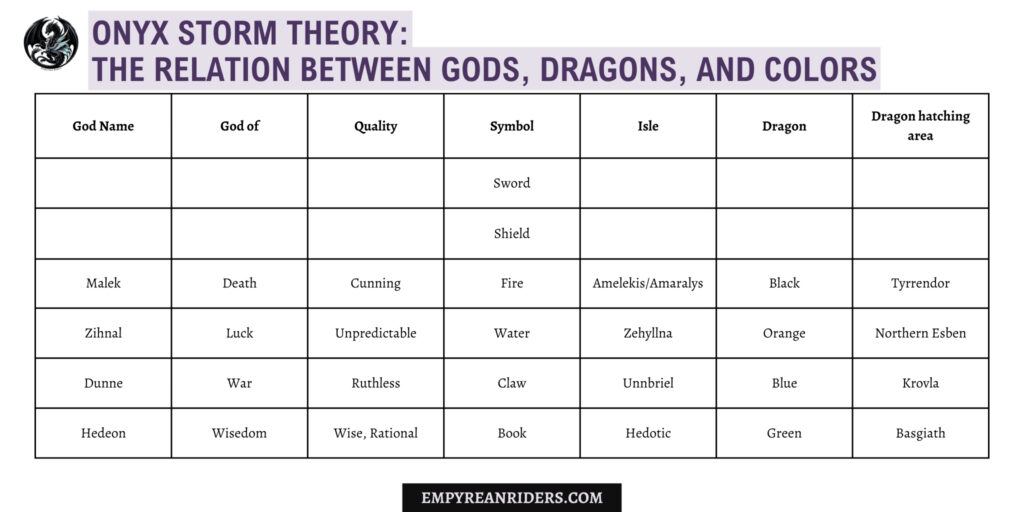
The Amari and Loial Debate
Deverelli referred to the people from the continent as Amaralys. And yet, Violet said:
- “It’s Amaralys, according to ancient royal records, though I believe Poromish records called it Amelekis.”
So which one is it? Amaralys, meaning they worship Amari, or Amelekis, meaning they worship Malek?
Why not both? Look at where the Bay of Malek is—between Poromiel and The Barrens. What if part of the continent was dedicated to Amari and part to Malek?
- “Your temples to Malek and Dunne are disproportionately large compared to the other gods’ here,” Trager notes, leaning back in his chair. “Except Amari, of course.”
Where is the largest temple of Amari? Tyrrendor.
- “[…]pauses on the Temple of Amari, which was the most noted landmark besides our library.”
At this point, we don’t know much about the fliers, but we do know they share the Gods. Maren mentioned that her offerings to Amari were received. While on the isles, Maren also states:
“We can’t go until the fire is out,” Maren says. “No one leaves an offering to Malek unattended.”
Colors and spectrums
As per Zuzle’s theory about colours, we need to look at what everyone wears.
- Unnbriel guards wear blue. We’re immediately thinking of Sgaeyl, right? The most ruthless. She doesn’t just go to war. She is war. She’s terrifying.
- Hedotis Triumvirate wear green. The greens are the most rational. In fact, they gave away their ancestral hatchling grounds to everyone to create The Vale. They seem rather kind and wise too…
When we read Rhi’s POV, we learn a little about Feirge. She’s calm, cool and collected—wise and rational at all times. - Zehyllna guards wear orange. Well, we learned that the God of Luck is unpredictable. When you read Imogen’s POV in Onyx Storm, we get a glimpse into how an orange dragon is. She changes her mind, she’s unpredictable, she’s all over the place. In other words: chaotic! Checks out!
- Riders wear black. The largest dragons are black. Cunning, rare, special. They are natural-born generals. They are, for lack of better words, the kings of dragons—just like Malek comes from Malik, a Semitic term meaning King.
We’re left with brown dragons, red dragons and… the irids.
- Red dragons are quick to temper. Red, perhaps, a nudge to love? According to the Redditor, red dragons have very loyal riders—Sloane, Liam, Dain—which could be a hint at Loial.
- Brown dragons and irids—now here’s where things get murky.
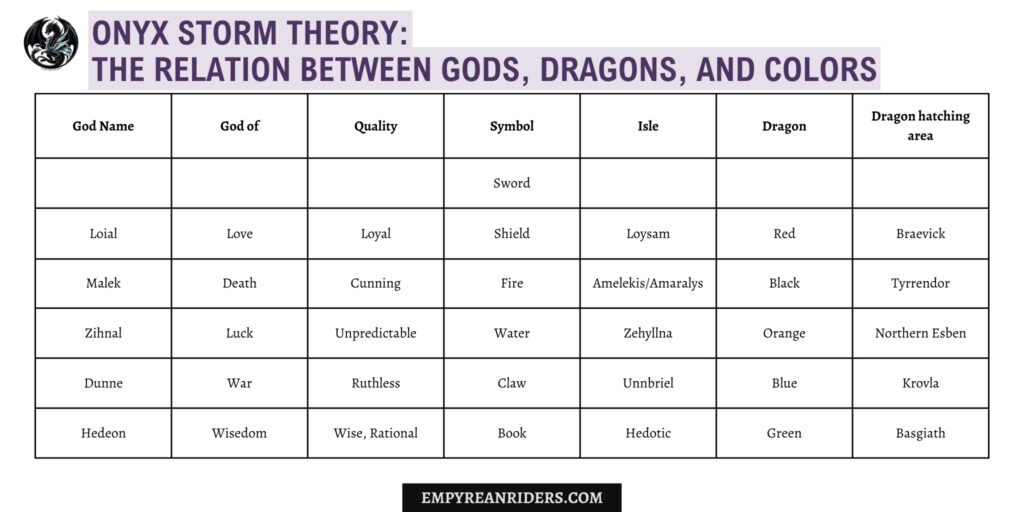
The Missing Pieces
Rabbid_Goat suggests that the brown dragons are missing a God. They also run a fun parallel between Gods in pairs:
- Claw vs Book = War and wilderness vs civilisation and rational discussions.
- Water vs Fire = Self-explanatory.
- Sword vs Shield = The assumption is that red is Loial, which means brown could be its opposite… but what is the opposite of love? Hate? No. Deception? Maybe.
So we’re missing the God of Deception. Now, Amari herself is missing from our chart—so is she the Goddess of Gods or the Goddess of Lies? I don’t think so.
We’re also missing a place for Deverelli Isle, the neutral isle. A place for the irids, for Amari, and for the God of Deception.
The numbers don’t really add up anymore. Because no matter what, we have 7 species of dragons. Where do the irids fit into this? And do we have 6 or 7 Gods?
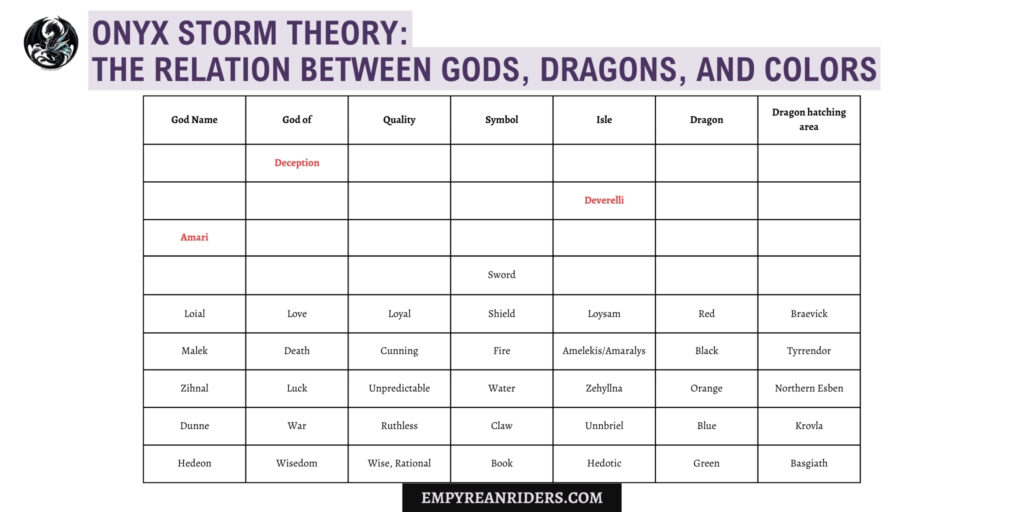
Let’s recap
6 Gods: Amari, Malek, Zihnal, Dunne, Hedeon, Loial. Either one of them is the God of deception or we have another God of deception!
7 dragon colors: Black, Blue, Orange, Green, Brown, Red, and Irids.
But only 6 God emblems. And only 6 land masses (although they could be interpreted as 7): Continent (Amaralys and Amalekys); Loysam, Zehyllna, Unnbriel, and Hedotic… and Deverelli!
So what exactly is happening here? Maybe the God of Deception is doing what needs to be done: deceive!
Alright, now we need to move to iiamuntuii, the Redditor that took the work to the next level.
So what is our problem right now? We don’t know where to place the brown dragons, the irids, and Amari. The assumption is that Amari might just be the Queen of Gods or the Goddess of Deception. But I’m pretty sure she’s not…
Before we begin, I would like for you to think of the following quotes from the book:
“The god of wisdom is the trickiest to placate. Hedeon seems to only answer those who do not pray to him.”
Sounds a little strange, doesn’t it? Every time someone actually prays to a God, it feels like their prayers are received or answered, as we discussed above.
“While many preach loyalty to Hedeon above all others, especially in Calldyr Province,”
Odd that the place, built on lies, seems to prefer this particular God. If you read my take on the Tyrrendor theory, you will note that it is my belief that Tyrrendor was the original seat of power on the continent (or at the very least, the Western side of the continent) and that the royal house of Tauri simply stole the crown, effectively replacing the house of Riorson with the house of Tauri. Huh, how deceiving!
[related to the people of Hedeon] “But though their intelligence and their wisdom inspire me, their artifice terrifies me.”
Interesting. Sounds like Asher realized that these people are artificial, they are not honest. They are… artificial, lying.
Basically, iiamuntuii comes out and states: what if Hedeon is the God of Deception? Well, actually, it checks out! And there is plenty of evidence to support this entirely!
First is the actual name: Hedeon. Hidden!
“I do not like this place.” Andarna scrapes a single talon through the grass, revealing only damp sand. “My kind would not settle here. We should leave.”
I mean, I don’t know what to make of this observation, but I feel like there is a double meaning to this.
“They razed the original structures about a hundred and fifty years ago and rebuilt with what Dad called intention.”
They are hiding their original structures. It’s all a lie. Everything!
“And there’s no port. It’s a coastal city with no port. For being the Isle of Wisdom, it’s a far-from-logical approach.”
Violet, a very logical being, seems to immediately notice that the very Isle of Wisdom lacks exactly that.
These people do not use wisdom as their test but deception. Luckily, Violet seems to be one step ahead.
There’s more. The people of Hedotis have purple eyes, hiding their original color. You know who else likes purple a lot? Venin. They often have purple robes.
And you know who else prefers purple? Andarna.
“Her nostrils flare, and her scales shimmer to the purple-toned black she usually prefers.”
Now let’s go back to our Redditor, who is currently enjoying the very light read of The Decline and Rise of Democracy, who mentions a Greek author, Herodotus.
iiamuntuii said that they did some searches on Wiki to check more about Herodotus. Well, I triple-checked, and here are the findings indeed:
He is often referred to as the “Father of History,” a title bestowed upon him by the Roman orator Cicero. This recognition stems from his seminal work, The Histories, which is considered one of the earliest comprehensive records of ancient traditions, politics, geography, and clashes between various cultures.
However, Herodotus has also been dubbed the “Father of Lies” by some critics. This criticism arises from his inclusion of numerous tales and anecdotes that some contemporaries and later scholars found dubious or exaggerated. For instance, the historian Thucydides accused Herodotus of fabricating stories for entertainment purposes. Additionally, Plutarch authored a treatise titled On the Malice of Herodotus, highlighting perceived biases and inaccuracies in his accounts.
Herodotus’s narrative style often involved digressions and the recounting of various legends and folk tales. While these elements enriched his storytelling, they also led some to question his reliability as a historian.
Ugh. You know who else seems to do this? The Scribes! And Calldyr with their faux narrative.
To paraphrase our Redditor: Given that Amari is the primary deity of Navarre and the Queen of the Gods, it is striking how seldom she is mentioned or prayed to. Instead, with its historical erasure and deep-seated secrecy, Navarre’s culture seems to align more closely with… a God of Lies.
Where exactly is Amari mentioned over and over? In Aretia, Tyrrendor. We know about the large temple of Amari, right in the center of Aretia. It gets interesting to learn just how prevalent the color green is here in Aretia. The rooftops are green.
“Her eyes widen as her gaze sweeps over the town, each structure with its identical green roofs, then pauses on the Temple of Amari, which was the most noted landmark besides our library.”
Lewellen is described as wearing a hunter-green tunic, whereas the robes on Hedotis are described as pale green. Interesting observation here. A copy. A lesser green.
And then we have the emeralds on the Blade of Aretia and the Sword of Tyrrendor.
So where does that leave Amari?
Amari is the Queen of Gods. Malek is the King. Maybe they were once ruling together. Again, looking at the map and going with iiamuntuii’s comments:
Since Poromiel was once called Amelekis (Malek)—with the Bay of Malek marking its border—and the Navarreans were once known as Amaralys (Amari), there seems to be a clear connection between these names. Malek means King, and Amari is the Queen of the Gods, suggesting that their presence should be equally reflected across the continent, ruling together. If their names once indicated a shared presence, why does Malek still endure (in the Bay of Malek and possibly the Barrens), while Amari is now only represented in Aretia?
The Redditor tells us to look at the Origin story from the fables of the Barren. Their idea is that the Origin is actually related to the Gods and not just humans.
An origin story, like Genesis, ties back to the gods.
“One brother bonded with a gryphon, another with a dragon. But the third, jealous, drew power directly from the source, losing his soul and waging war on them.”
“It was this third brother, who commanded the sky’s greatest power, who ultimately vanquished his jealous sibling—at a great and terrible cost.”
Lineage:
If the “third brother” in both quotes is the same, then the Venin brother was the victor.
Now, consider the gods. If Malek and Amari once ruled together but were overthrown, and traces of this conquest remain…
- Which god was vanquished?
- Which god took her place?
Amari now exists only in Aretia, while Navarre is steeped in secrecy and deception. Did Hedeon defeat Amari, forcing her into exile? Did the God of Lies commit history’s greatest deception—impersonating the Goddess of Wisdom for centuries?
If so, what was his “great and terrible price”?
Perhaps his most valued power source—what the Venin now seek: Dragons. Hatchlings. The Vale.
And why do the Fables of the Barren call Amari the “jealous sibling”? Because history is written by the victors.
And Hedeon, our own Herodotus—historian, geographer, and teller of tales—lies.
A lot to digest but..
Are you still with me, or is your head spinning too? Because this is a lot. So where does this leave us with our Gods and their ties to dragons, colors, and locations?
Based on all of the above, our chart looks very, very different. But does it fit?
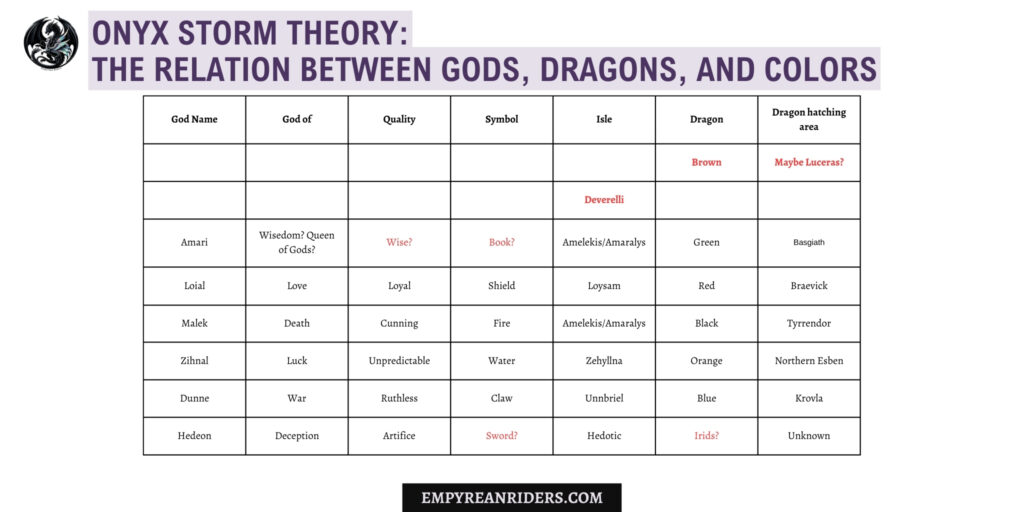
Well, we have a problem. Several, actually. Things don’t really fit anymore.
Could it be that the Queen of Gods is related to Tyrrendor? In which case, we’re talking cunning—related to the black dragons, right? The most cunning. The leaders… but then again, why is everything related to “green”? Green rooftops, green emeralds? When you think of black, you mostly think of death, right? Malek.
Let’s assume that Amari is connected to the black dragons and the Riorson House, where their original hatching ground is. And now assume that Malek is related to Poromiel. Brown leathers. Assume that Malek is connected to the brown dragons. There’s a slight problem here too. Rebecca Yarros tells us that her favorite dragon is Tairn (black) and her favorite God? Malek. Something tells me she wouldn’t put Tairn with Amari and Malek with a brown we know nothing about.
Where does that leave us with the green dragons, then? Basgiath? So they remain the true wise dragons, nothing to do with the mess Hedeon created. It would make the most sense for the greens to be connected with Amari. After all, Rhiannon rides a green, and she has features that remind Violet of a rendering of Amari.
The browns are from Luceras, at least this is what we assume, seeing as they are the only ones who don’t mind the cold. Could it be that they are connected to the God of Deception?
And what of the irids? They seem very much “neutral” and pacifist. Are they somehow chilling on Deverelli? They have been watching the riders for weeks before revealing themselves. That implies that they knew of them somehow. Zuzle also assumes here that the irids are actually related to Hedeon. They are deceiving. They hide themselves and their true color—should they even have one. They don’t answer prayers from others or offer help when asked to do so, only when they see it as convenient (they didn’t come to help when asked to help, but Leothan came to fire the wards when he saw fit). They seem hypocrites and didn’t put Andarna to the test. But they deceived Andarna to tell them everything but in reality, they were actually testing Violet.
Theo emphasizes that venin lie. They are excellent actors. Could it be that our little Hedeon is indeed linked to venin? And if that’s the case, are the irids… terrible ones? Are they responsible for the division between dragons, continents, isles, and more?
So the question now is: Are the browns related to Deverelli, fitting no God, being neutral? Or are the irids connected to Deverelli pretending to be neutral, when in reality, they speak in double meaning and have an ulterior agenda, much like Courtlyn?
To quote Zuzle:
Theory 1:
- Black dragons – They are natural leaders (Tairn and Codagh), originally hatched in Aretia/Tyrrendor. Amari is the leader of the gods. The largest temple of Amari is in Aretia.
- That leaves brown dragons for Malek—we know nothing about them except that they reside in the north (Luceras).
- Green dragons have no god because they truly worship wisdom, which must be earned, not prayed for as Violet explained. Their home is Deverelli. This fits well with Asher, his strong connection to the island, and its bookstore as a symbol of wisdom.
Alternate Version:
- Brown dragons would then have no god, fitting their placement in Deverelli, with their ancestral hatchlings in Luceras.
- Black dragons could be connected to Malek instead, making him the King of Gods (Aretia). Which ties in with our Tyrrendor theory, that Tyrrendor was the original seat for the crown.
- Green dragons could belong to Amari, the true forgotten goddess of wisdom, Queen of the Gods (Basgiath).
- The irids are the true Hedeon. Hiding, scheming.
And the irids? Potentially originally from Calldyr, where all the lies are born, and the fake crown now rules. And related to Hedeon, who buried the true heart of the island, under lies and deception.
I would say that while it feels as if we are closer to a resolution, a few variables still remain. But upon inspecting the map over and over, I wonder if perhaps we are looking at it all the wrong way.
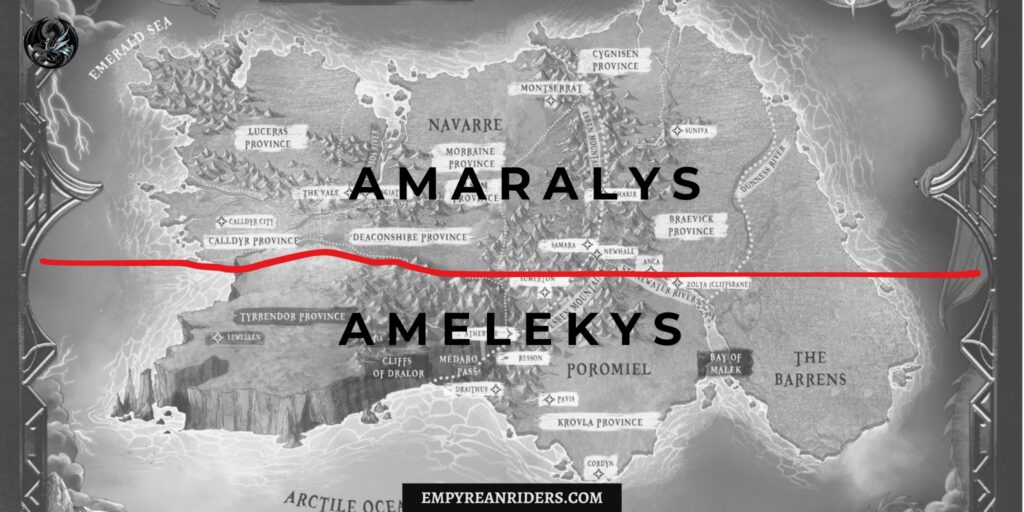
I’m sure I will update this theory a million more times, as I discover new clues and read some of your comments. But for now, I will leave you with one other question:
What if, it wasn’t west and east, Navarre and Poromiel. But it was North and South, Amaralys and Amelekys?
Plus now, it would explain why Krovla wanted to break from Poromiel all this time, seeing as it was, perhaps, part of Tyrrendor.
And with this in mind, currently, this is how the table looks like:
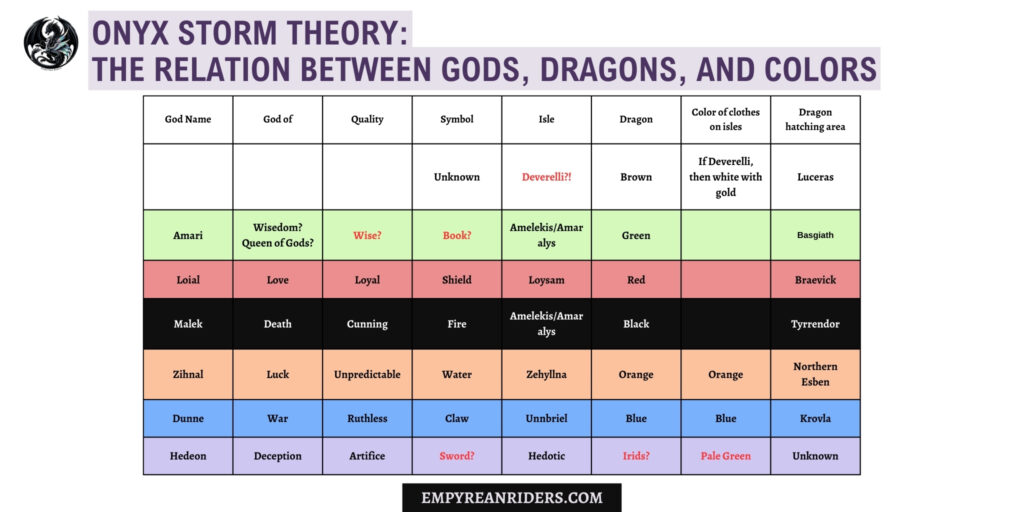
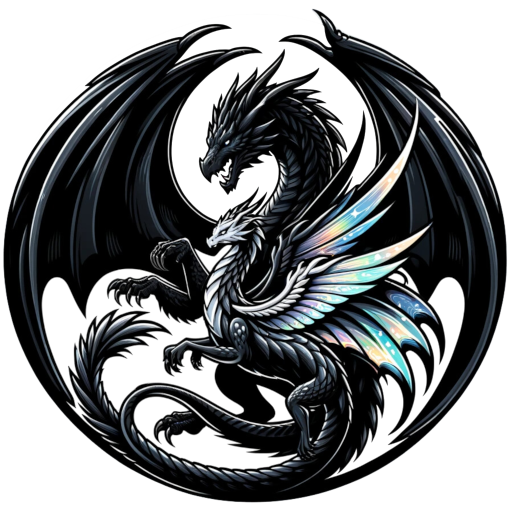

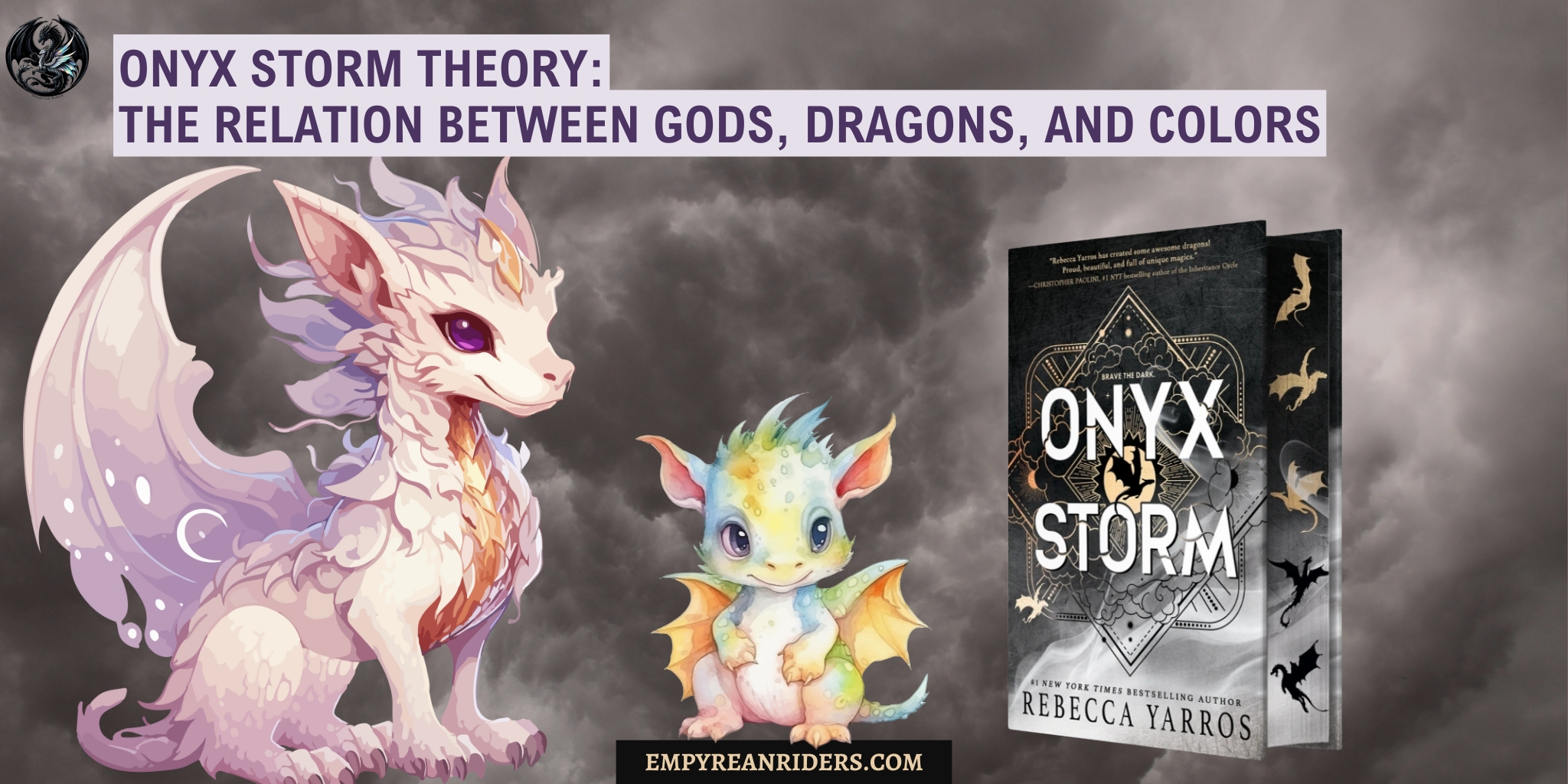


Leave a Reply